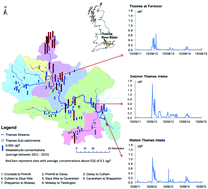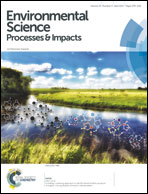Modelling metaldehyde in catchments: a River Thames case-study†
Abstract
The application of metaldehyde to agricultural catchment areas to control slugs and snails has caused severe problems for drinking water supply in recent years. In the River Thames catchment, metaldehyde has been detected at levels well above the EU and UK drinking water standards of 0.1 μg l−1 at many sites across the catchment between 2008 and 2015. Metaldehyde is applied in autumn and winter, leading to its increased concentrations in surface waters. It is shown that a process-based hydro-biogeochemical transport model (INCA-contaminants) can be used to simulate metaldehyde transport in catchments from areas of application to the aquatic environment. Simulations indicate that high concentrations in the river system are a direct consequence of excessive application rates. A simple application control strategy for metaldehyde in the Thames catchment based on model results is presented.



 Please wait while we load your content...
Please wait while we load your content...